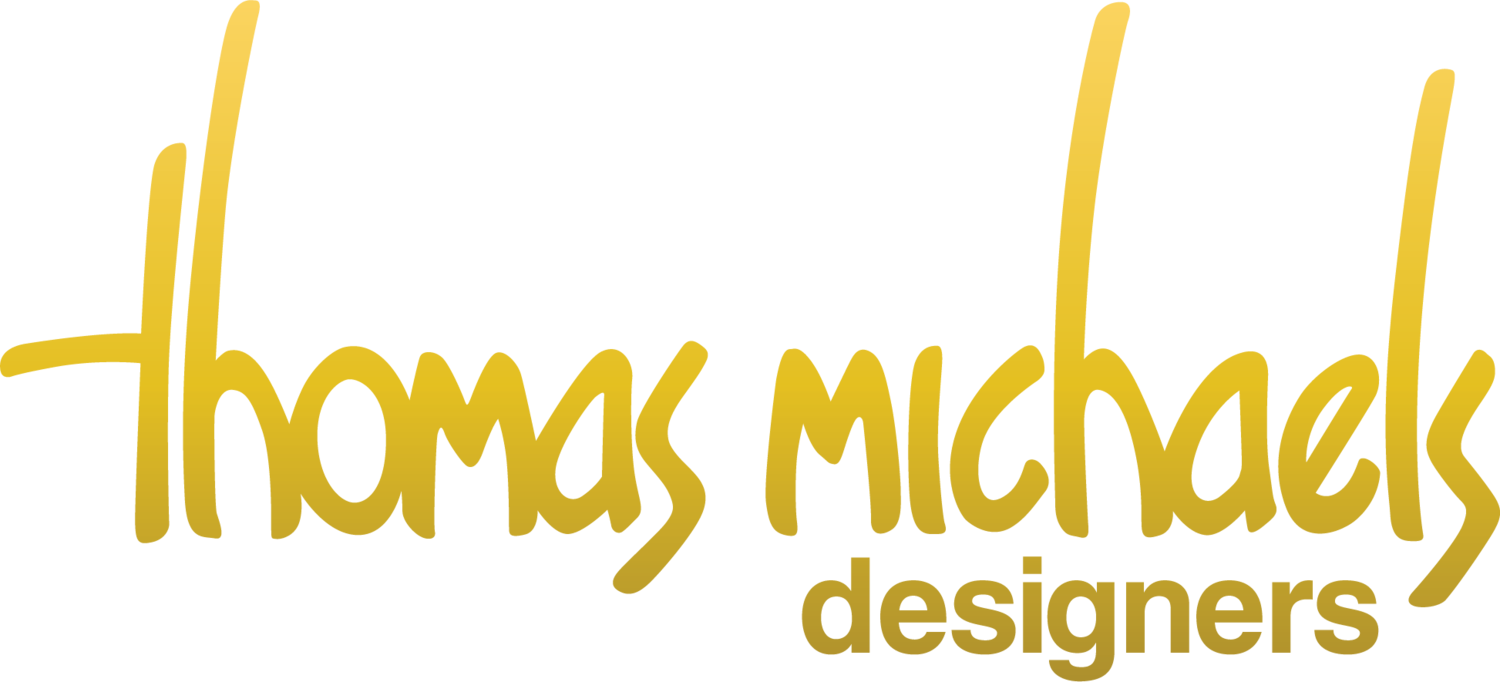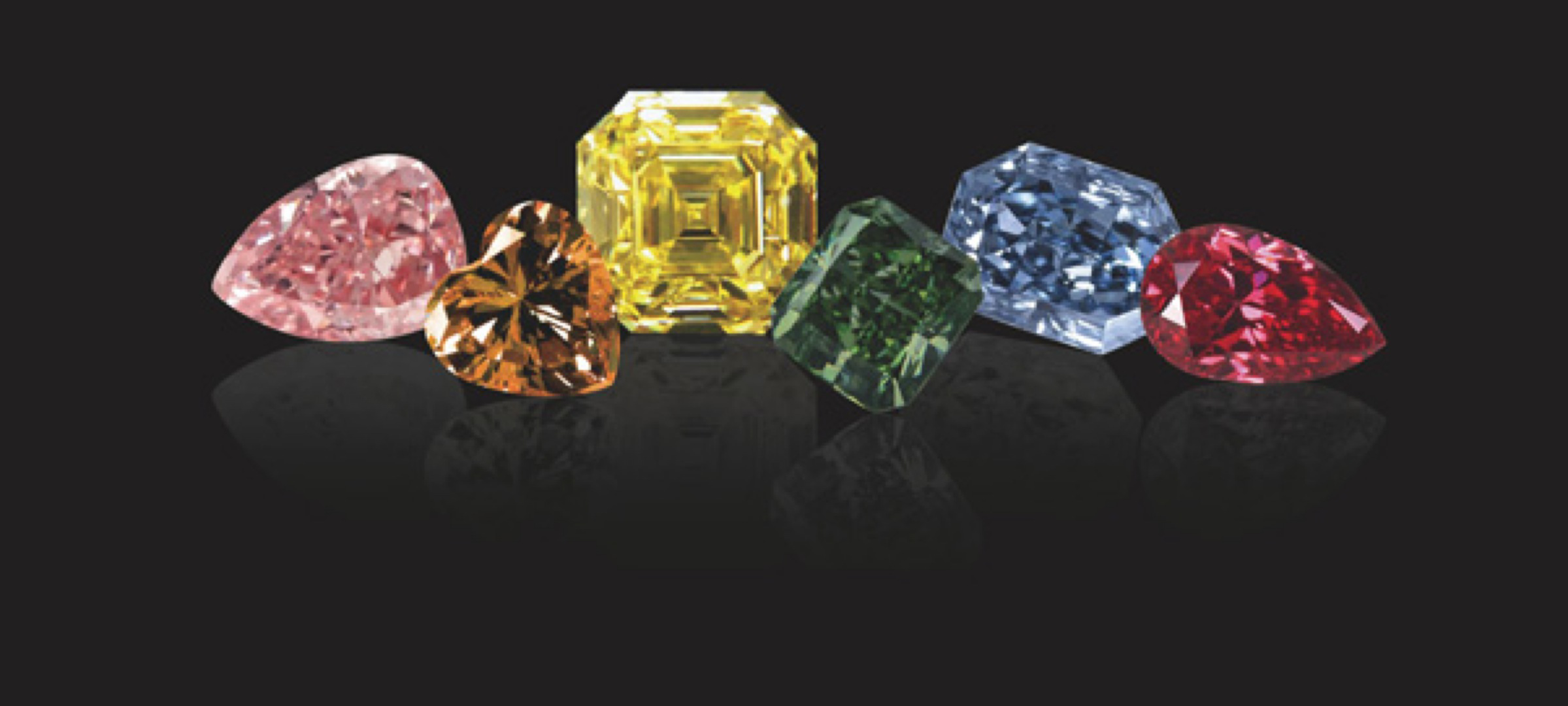Natural Color Diamonds
Natural Color Diamonds photo: Alan Bronstein
A chemically pure and structurally perfect natural diamond is truly transparent with no hue, or color. However, in reality almost no gem-sized natural diamonds are absolutely perfect. The color of a diamond may be affected by chemical impurities and/or structural defects in the crystal lattice. Depending on the hue and intensity of a diamond's coloration, a diamond's color can either detract from or enhance its value. For example, most white diamonds are discounted in price when more yellow or gray hue is detectable, while intense pink or blue diamonds (such as the Hope Diamond) can be dramatically more valuable.
Natural diamond is a crystal that is produced from carbon within earth's lithosphere mantle over millions of years. The crystals are brought to the surface of the earth by volcanic activity and erosion of these volcanic pipes. Most diamonds display color from colorless to light yellow, gray or brown. Occasionally a diamond will display natural occurring color that is distinct and more dramatic. These diamonds are known as fancy color diamonds and are valued for their intensity of color. The color in the diamond occurs from trace elements captured within the crystal at the time the diamond was created. For every single natural color diamond found there are 10,000 white diamonds.
Diamonds are scientifically classified into two main types and several subtypes, according to the nature of impurities present and how these impurities affect light absorption. Type I diamonds have nitrogen (N) atoms as the main impurity, commonly at a concentration of 0.1 percent. If the nitrogen atoms are in pairs they do not affect the diamond's color; these are Type IaA. If the N atoms are in large even-numbered aggregates they impart a yellow to brown tint (Type IaB). About 98 percent of gem diamonds are Type Ia, and most of these are a mixture of IaA and IaB material: these diamonds belong to the Cape series, named after the diamond-rich region formerly known as Cape Province in South Africa, whose deposits are largely Type Ia. If the nitrogen atoms are dispersed throughout the crystal in isolated sites (not paired or grouped), they give the stone an intense yellow or occasionally brown tint (Type Ib); the rare canary diamonds belong to this type, which represents only 0.1 percent of known natural diamonds.
Type II diamonds have very few if any nitrogen impurities. Type IIa diamond can be pink, red, or brown due to structural anomalies arising through formation during crystal growth—these diamonds are rare (1.8 percent of gem diamonds), but constitutes a large percentage of Australian production. Type IIb diamonds, which account for 0.1 percent of gem diamonds, are usually a steely blue or grey due to scattered boron within the crystal matrix; these diamonds are also semiconductors, unlike other diamond types. However, an overabundance of hydrogen can impart violet tones.
Color Diamond Wheel
Red, pink and brown hues are created by tremendous pressure within the earth compressing the diamond's crystal structure. Green diamonds and some blue diamonds are created when they are formed in close proximity to natural occurring radiation. These blue and greens diamonds vary from aqua, teal greens, light mint green to grass green diamonds.
Color is determined and described by three attributes: hue, tone and saturation. Hue refers to the actually color that is displayed, such as blue or yellow. Tone is the relative lightness or darkness of a color. Saturation is the relative strength or weakness of a color. These three attributes are used to describe and grade fancy color diamonds. Fancy color diamonds’ value is determined first by color and the clarity. The color of a fancy color diamond is determined by looking at the diamond “face-up” (the diamond is put in a matte white diamond tray and lit from the top). The diamond is described by its color; sometimes a modifier such as yellowish or purplish is used. The terms such as fancy light or fancy vivid describe the tone and saturation of the diamond. There are 27 hues used to describe fancy color diamonds by the GIA.
When a diamond is considered a natural fancy yellow it displays a distinct yellow hue. There are no faint or very light fancy color yellow diamonds. If a diamond displays a very faint yellow color, it is part of the GIA white color grading system labeling the color form D – Z. D,E,F are colorless, G,H,I,J near colorless, K,L,M faint yellow, brown, gray, N-R very light yellow, brown or gray. S-Z light yellow, brown or gray. This is also true for orange yellow diamonds. The faint or very light would appear as a faint brown color and would also be part of the D – Z color grading system. All other colors of diamonds are graded with the terms faint, very light, light, fancy light, fancy, fancy intense, fancy deep, fancy dark, and fancy vivid.
Natural color diamonds come in a large range of color and no two are identical. It was difficult to devise a grading system to describe a color diamond. Both the Gemological Institute of America (GIA) and International Gemological Institute (IGI) have the same three parameters to describe color of a diamond: hue, tone, and saturation.
Hue refers to the dominant color of the diamond, such as yellow, pink or blue. There also can be modifiers that add a secondary color to the diamond. For instance, a purplish-pink diamonds is a diamond with a principle pink hue and a slight purple tint. If there are no modifiers in the diamond the hue is said to be pure. The tone of the diamond refers to how much lightness or darkness the diamond appears to retain. The range of tones goes from light to dark. Saturation describes the intensity of the hue. The saturation of light (tone) diamonds can very from pastel to vivid and intense. Dark diamonds can range from dark to deep.
Many fine natural color diamonds have an accompanying "diamond origin report" from one of the major international gem laboratories assuring its natural occurring origin or in other words that it is an unadulterated naturally color diamond.
The strength of color is one of the most important factors in determining the value of a natural color diamond. The value of the natural color diamond increases with the intensity of the most prominent color within the diamond. Yellow and brown diamonds are more common in color diamonds; pink, green, blue, red, pure orange, and purple diamonds are quite rare and command the highest prices. For instance, there are only six known red diamonds in the public domain.
Color diamonds maintain and increase in value even during an economic crisis. In 2009, during the worst economic times in the last 80 years, the white diamond market value decreased close to 20%, whereas a survey of the auction market for fine color diamonds reveals that they hold their value, and some color diamonds value even increased during the econimic down turn.
Thomas Michaels Designers are experts and suppliers of exceptional natural fancy color diamonds and have been doing so for over 34 years.



